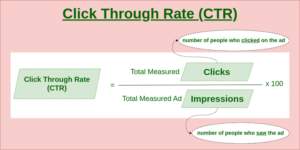Meta descriptions play a vital role in search engine optimization (SEO), user engagement, and click-through rates (CTR). But what is a meta description, and why does it matter so much for your website?
In this article, we’ll explore the definition, importance, and best practices for writing effective meta descriptions that help your content stand out in Google Search results — especially in the age of AI-generated snippets and Google News compliance.
What Is a Meta Description?
A meta description is an HTML tag that summarizes the content of a web page. It appears under the title of your page in search engine results pages (SERPs) and helps users decide whether to click on your link.
Example of a meta description tag:
htmlCopyEdit<meta name="description" content="Learn what a meta description is, why it's important for SEO, and how to write one that boosts click-through rates in 2025.">
Meta descriptions don’t directly affect search rankings, but they strongly influence user behavior and organic traffic, especially when optimized correctly.
Why Are Meta Descriptions Important?
Even though Google sometimes rewrites them, meta descriptions still serve several essential purposes:
1. Improve Click-Through Rates (CTR)
A compelling meta description acts like ad copy for your page. When written well, it can significantly increase the chances of a user clicking your result over competitors.
2. Summarize Page Content
They provide a concise summary of what users can expect, improving user experience and search intent alignment.
3. Impact on Social Sharing
Meta descriptions often appear in link previews on social media platforms like Facebook and LinkedIn.
How Meta Descriptions Work in Google Search
Google doesn’t always use the meta description you provide. Instead, it may generate one dynamically based on the user’s search query and page content. However, writing one is still essential because:
- If relevant, Google may use it as-is.
- A well-optimized description can influence how your page appears in AI Overviews and featured snippets.
How Long Should a Meta Description Be in 2025?
As of 2025, the ideal length for a meta description is between 150–160 characters. Anything longer may be truncated, especially on mobile devices.
📝 Best Practice: Keep your meta descriptions concise, keyword-rich, and engaging while staying within the recommended length.
LSI Keywords to Include in Meta Descriptions
To increase relevance and semantic richness, consider including these LSI (Latent Semantic Indexing) keywords:
- SEO snippet
- HTML meta tags
- Search engine result page
- SERP preview text
- Organic CTR
- Page summary
- Google SEO guidelines
- On-page SEO optimization
- Meta tag example
Using these related keywords naturally in your content ensures better context for both users and search engines.
How to Write a Great Meta Description
Here’s a simple step-by-step process to create effective and SEO-friendly meta descriptions:
✅ 1. Use Your Target Keyword
Include your primary keyword — in this case, “What is a meta description” — early in the sentence.
✅ 2. Keep It Relevant and Unique
Each page should have a unique meta description that accurately reflects its content.
✅ 3. Incorporate a Call to Action (CTA)
Encourage users to take action with phrases like “Learn more,” “Discover how,” or “Explore the guide.”
✅ 4. Match Search Intent
Make sure your description aligns with what the searcher is looking for — whether it’s information, products, or services.
✅ 5. Test & Iterate
Monitor performance in Google Search Console and adjust underperforming descriptions.
Examples of Effective Meta Descriptions
Example 1 (Blog Post):
“Discover what a meta description is, why it matters for SEO, and how to write one that increases clicks in 2025.”
Example 2 (Product Page):
“Find out how our SEO tools help you create perfect meta descriptions that boost visibility and clicks.”
Example 3 (Service Page):
“Improve your site’s SEO with professional meta description writing services tailored for higher Google rankings.”
Common Mistakes to Avoid
- ❌ Keyword stuffing
- ❌ Using duplicate meta descriptions across pages
- ❌ Writing vague or misleading summaries
- ❌ Exceeding the character limit
- ❌ Ignoring mobile optimization
Meta Descriptions and Google News Compliance
If you’re submitting content to Google News, your meta descriptions must:
- Clearly describe the article’s content
- Avoid clickbait or misleading summaries
- Reflect journalistic standards
- Not be AI-generated without editorial review
Following these standards helps improve visibility in Google News Showcase and Top Stories features.
Final Thoughts: Meta Descriptions Are Small but Mighty
So, what is a meta description? It’s a short, powerful HTML tag that acts as the first impression of your webpage in Google. While not a direct ranking factor, it greatly influences user behavior, click-through rates, and trust.
By writing optimized, relevant, and engaging meta descriptions, you improve your website’s chances of ranking higher and attracting more organic traffic — especially in today’s AI-driven search landscape.
FAQs About Meta Descriptions
❓ Do meta descriptions affect SEO rankings?
No, not directly. But they influence CTR, which can indirectly affect rankings.
❓ How do I check my meta descriptions?
You can view them in your page’s HTML or use tools like Yoast SEO, Semrush, or Ahrefs.
❓ Should every page have a meta description?
Yes. While Google might rewrite them, having one gives you more control over your brand’s message in search results.
Optimize Your SEO Strategy Today
Want to take your SEO to the next level? Start with a strong foundation — write better meta descriptions that attract clicks, align with user intent, and follow Google’s best practices.



